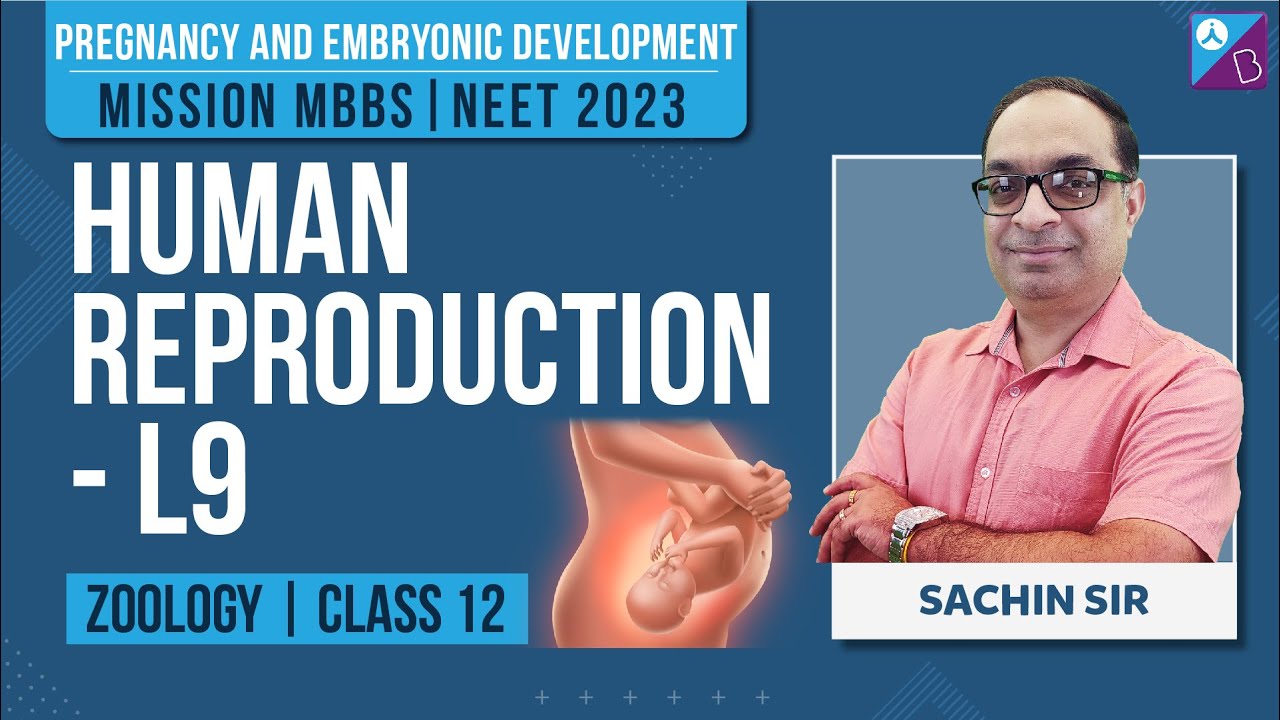In embryology, the embryo is formed and developed into a fetus. The process commences with the fertilization of the ovum by sperm. Hence, the fertilized ovum is referred to as a zygote that undergoes active mitotic cell division without the significant growth and cellular differentiation, leading to the development of an embryo.
Download Complete Chapter Notes of Human Reproduction
Download Now
1. This phase in the development of sperm has no counterpart in ovum-development
(a) spermiogenesis
(b) phase of multiplication
(c) phase of growth
(d) polar body formation
Answer: (a)
2. During this phase, the nuclear envelope begins to disappear
(a) cytokinesis
(b) S phase
(c) Anaphase
(d) Prometaphase
Answer: (d)
3. In humans, the number of ova and sperms that would be produced from 100 secondary oocytes and 100 secondary spermatocytes during gametogenesis is
(a) 50 ova, 100 sperms
(b) 100 ova, 100 sperms
(c) 100 ova, 200 sperms
(d) 200 ova, 200 sperms
Answer: (c)
4. The undifferentiated primordial germ cells are larger in size and their chromatin rich nuclei are distinct in
(a) growth phase
(b) multiplication phase
(c) maturation phase
(d) all of these
Answer: (b)
5. Spermatogenesis and oogenesis describe the process of meiosis in males and females, respectively. This statement about both processes is true
(a) both are halted in an intermediate step until puberty
(b) both produce the same number of viable gametes
(c) oogenesis produces a larger gamete than spermatogenesis
(d) oogenesis forms two polar bodies, spermatogenesis forms only one
Answer: (c)
6. Typically, in humans, gametes are disease-free or even in other animals as
(a) gametes are immune to diseases
(b) germs cannot attack gametes
(c) germplasm is segregated easily and not subjected to diseases from which somatic cells may suffer
(d) none of these
Answer: (c)
7. Phenomena that creates female gametes, oogenesis is ceased at prophase I up till puberty. This describes the DNA content of a female’s gametes during her childhood.
(a) 23 chromosomes, 23 chromatids
(b) 23 chromosomes, 46 chromatids
(c) 46 chromosomes, 92 chromatids
(d) 46 chromosomes, 46 chromatids
Answer: (c)
8. The amount of yolk and its distribution are changed in the egg. This is affected
(a) ferrilization
(b) cleavage pattern
(c) zygote formation
(d) number of blastomeres
Answer: (b)
9. Haemoendothelial placenta takes place in
(a) rat and rabbit
(b) camel and deer
(c) goat and cow
(d) ape and man
Answer: (a)
10. Atretic follicles occur in
(a) Liver
(b) Testis
(c) Thymus
(d) Ovary
Answer: (d)
BYJU’S also offers MCQs on other important topics for NEET. Explore them.
Related Links:
| MCQs On Genetic diversity |
| MCQs On Meiosis |
Recommended Video:
Pregnancy and Embryonic Development Class 12 Biology Concepts – Human Reproduction

Loved the questions